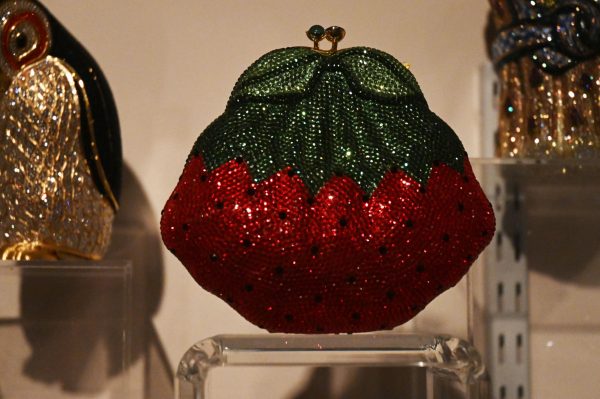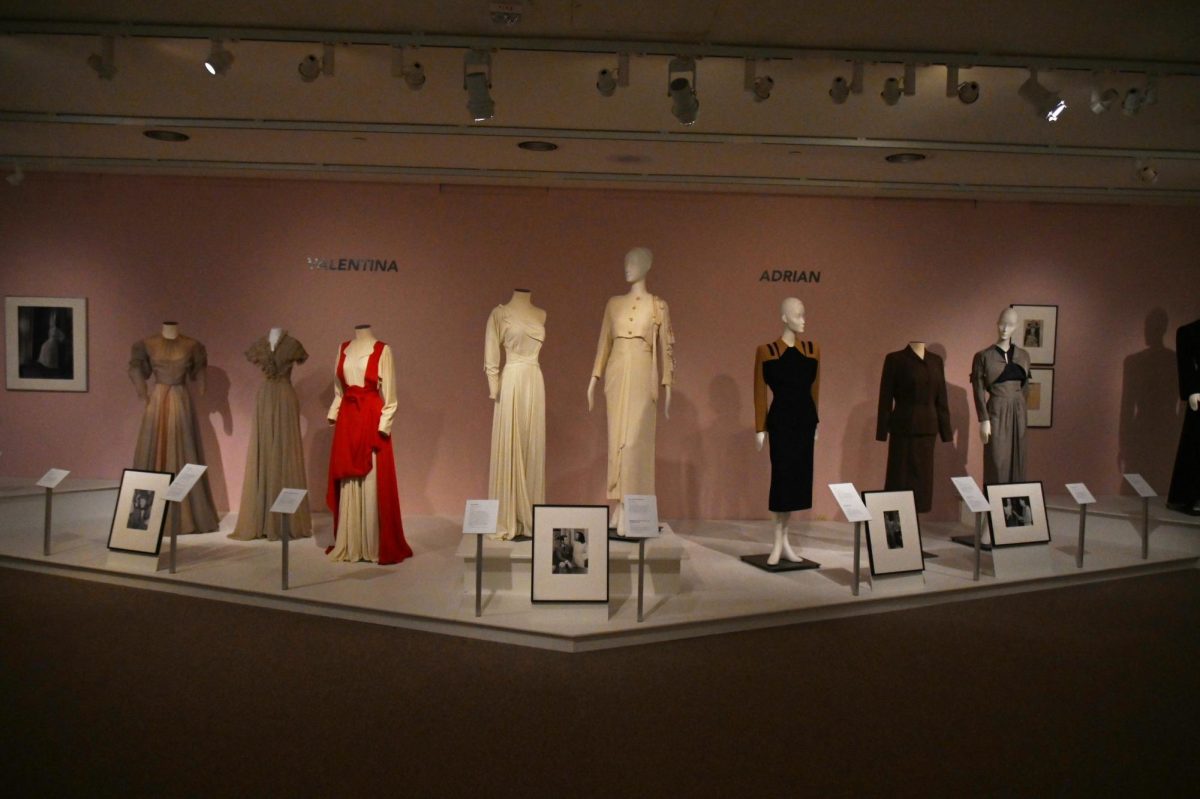It’s the 1970s, and women are showing up at the doors of the most popular clothing stores and boutiques with one mission in mind.
Walking in, they each tell the store clerk, “Just show me the Jerry Silvermans, please.”
Throughout this decade and much of the ’60s, Jerry Silverman Inc. became a practical, sellable fashion brand headed by businessman Jerry Silverman and his partner, designer Shannon Rodgers.
Their careers would eventually intersect with Kent State, leading them to become the founders of the Kent State University Museum.
History of the KSU Museum
“The early ’80s, [Silverman and Rodgers] were thinking about retiring, ending their brand,” said Sara Hume, professor and museum curator. “They also had this big collection of all their stuff they wanted to find a place for.”

Throughout his career, Rodgers collected about 4,000 pieces of historic garments, said Hume. He and Rodgers looked into giving the collection to an institution in New York, but none of them wanted that many pieces.
After connecting with the president of KSU in ‘83, Michael Schwartz, Rodgers donated his personal collection to the university. He and Silverman founded the KSU Museum as well as the School of Fashion Design and Merchandising.
“Next year is going to be the 40th anniversary [of the museum opening], so we wanted to do this exhibition in conjunction with the anniversary,” Hume said. “It’s to honor the institution’s history and to look back at their designs.”
Exhibit to honor museum founders
The exhibition, Shannon Rodgers and Jerry Silverman: Dazzling Day and Night, opened May 30, and will be on display in the museum’s Higbee Gallery until July 28, 2025.
Sarah Rogers, the KSU museum director who retired last month, curated Dazzling Day and Night.
In the gallery, over 30 pieces are displayed that trace the history of Jerry Silverman Inc., showing the early designs of their brand and some of the most popular.
“It was [a] very sellable, wearable dress,” Hume said.
There are ’70s dresses with fun patterns, cocktail dresses that are somewhere between day and evening wear, evening and formal dresses, suits, one having belonged to Rosalynn Carter, and pieces that belonged to Miss America ‘72, Laurie Lea Schaefer.
On a pedestal in the center of displayed evening dresses is what is described as a “dramatic” ball gown on its information card, worn by Phyllis George when she handed the Miss America crown to Schaefer.
Downstairs at the museum
Katharine Hepburn, an American actress from the 1940s to 1980s, was once connected to Rodgers in a show that he did costume design for.
A prominent fashion figure herself, Hepburn has her own exhibit that recently opened in the museum June 28 called The Hepburn Style: Katharine and Her Designers, and it is to be on display until May 25, 2025.
Curated by Joanne Fenn, the museum’s collections manager, registrar and a professor at the university, she has seen the garments since they first arrived at Kent State in 2012.

With almost 1,000 pieces to go through, Fenn said it was overwhelming. She does not typically curate, but has spent 22 years at the KSU Museum and has fun doing it.
The exhibit displays what an information sign says are, “fashionable costumes that blurred the line between costume and fashion.”
The sign at the beginning of the exhibit also reads that Hepburn “pushed for comfort, movement and proportions that complemented her.”
Hepburn’s public life
Showcased in the Stager Gallery are pieces by designers Hepburn worked with, who all ran their own businesses. This room focuses on the public-facing life of Hepburn.
Valentina was one designer whose style Hepburn loved and admired, said Fenn.
“Hepburn knew what worked for her … she was conscious of line and how the garment flowed off of her body,” Fenn said. “She felt Valentina was very complementary and captured those things.”
Another designer whose work is displayed, Adrian, was also a costume designer, whose most famous costumes were designed for “The Wizard of Oz.”
On an information sign, Hepburn is quoted speaking with Calvin Klein in the 1980s, where she said, “I think that Adrian and I had the same sense of smell about what clothes should do and what they should say.”
The last designer displayed is Irene. Hepburn did not get along well with her, Fenn said. But, she did like her designs, which evoked a “Hollywood glamour” feel.
Hepburn’s private life
In the Blum Gallery next door, the focus is on the private life of Hepburn.
Fenn said she was best known for wearing tan pants, a black top, a vest and a red turtleneck around her shoulders.
Fenn described a piece she put on display she finds intriguing. In the corner stands an incredibly frayed men’s shirt with repairs on it. Fenn said she wonders what it meant to Hepburn, having kept it for so long.
“It makes me wonder, was it Spencer Tracy’s, the love of her life?” Fenn mused.
In fact, many of her clothes were worn to the “bitter end,” Fenn said.
“It’s a very frugal kind of mentality. You invest in something, and you keep it on rotation,” Fenn said. “Today, we’re used to buying more fast fashion. She was very sustainable in her day.”
Each of the new exhibits can be visited by purchasing tickets online, open Tuesday-Saturday from 11 a.m. – 5 p.m. and Sunday from 12 p.m. – 4 p.m.
Lauren Cohen is a reporter. Contact her at [email protected].





